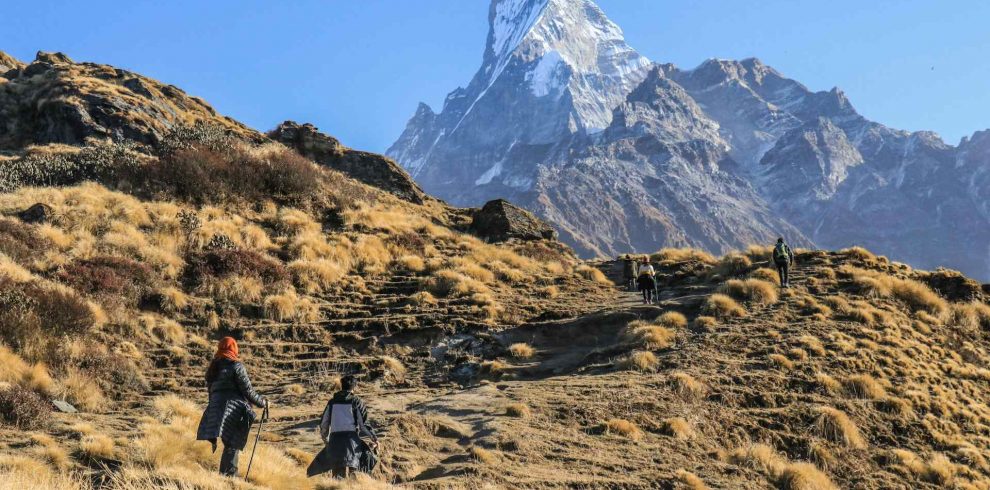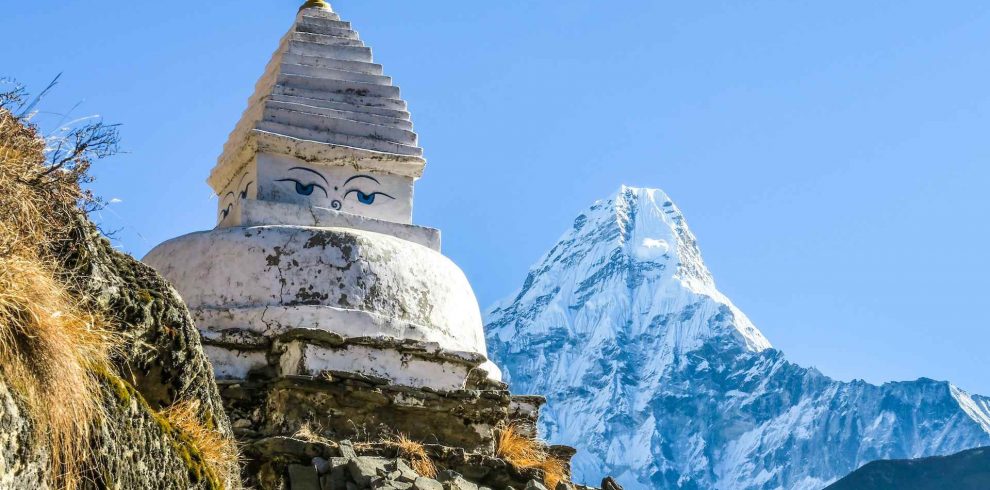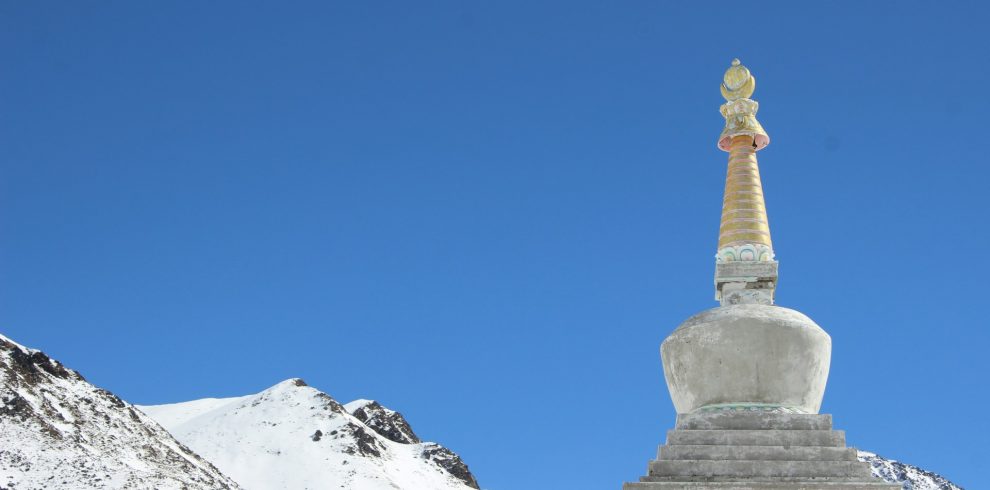Overview
One of Nepal’s most popular and renowned treks, the Annapurna Base Camp trek offers everything a wanderer might desire. The trek to Annapurna Base Camp (ABC) is a trekking route situated in Nepal that is famous among Nepalese as well as foreigners. As you ascend, the landscape rapidly shifts from a tropical forest to knee-deep snow amidst breathtaking snow-capped peaks.
Taking you through an incredible variety of landscapes in 14 days, this true Himalayan trekking trip is the ideal way to experience Nepal’s natural beauty. It’s a wonderful journey through a diverse environment and culture, with breathtaking views of the mountains, terraced farms, and charming Gurung homes.
Annapurna Base Camp is located at 4,130 meters, comparing this trek to other high-altitude adventures, it is shorter and easier with more adventure and obsessive views. It offers endless natural diversity along with breathtaking views of the Himalayan region and mountains.
Along the route, you will stop at the popular Poon Hill viewpoint and relax in the hot springs located at Jhinu Danda. Hot Spring will be worth it if you go after completing the trek. You will be fully relaxed, and the tiredness of the trek will fade away.
On an ABC walk, you can experience the spirit of adventure without worrying about the little things because our guide will be there at every step to guide and facilitate you. They will offer support with any difficult trekking portions and provide you with amazing tales about this region of the trek.
Best Time To Go
Determining the ideal time to begin the Annapurna Base Camp Trek is essential for an incredible and safe journey. With the benefits and drawbacks of every season, let’s examine the optimal seasons to travel.
Spring (March to May)
Spring is one of the best seasons for trekking to the base camp of Annapurna. This season is also known as the season of trekking as a lot of Nepalese and other people love to travel in this season as the skies are clear and there is not any risk of a sudden change in the weather.
Many types of wildflowers blooming over 2000 meters are visible in the spring, along with particularly breathtaking views of rhododendrons. A major feature of spring trekking in Nepal is seeing orchids and magnolias, and as the forest rises higher and higher, the hillsides painted with rhododendrons seem like a hiking haven.
Summer/Monsoon (June to August):
The trek is challenging in the summer season because of the monsoon rains in hilly areas. Trails can become hazardous due to low visibility caused by cloudy skies and excessive rainfall.
Trekking is still feasible in Nepal, but the terrain is more difficult than in the spring and autumn. It’s humid and warm during the monsoon. Almost every day, even for a few hours, there is rain, making trekking difficult and risky. So it is not recommended to do trekking in summer and monsoon season.
Autumn/Fall (September to November):
In Nepal, this is regarded as the ideal trekking season. The weather is stable, and the monsoon season has cleared the atmosphere, usually resulting in several days with a clear blue sky. While September is often pleasant and snow-free below 4,000 meters, December will have significantly colder weather.
However, due to their renown, the pathways and tea shops may grow crowded. It is highly recommended to book accommodations in advance.
Winter (December to February):
Due to the extreme cold and the presence of snow on the trekking paths, the winter months might be the bad times to go on trekking. When there is a lot of snow, there can be no walking trails. A prolonged snowfall will make the walking trail dangerous and extremely challenging to navigate.
However, the scenery in the winter has a certain charm of its own, offering calm and peaceful surroundings. Trekkers should be prepared with the right equipment, warm clothes, and the ability to handle difficult circumstances.
To sum up, the Pre-monsoon months of February, March, April, and May are the ideal times to hike to Annapurna Base Camp. If you are determined to trek after the monsoon, you strongly advise trekking in late September, October, November, and December. Although early September is also an option, the aforementioned months are our top picks. The months of February, March, November, and December are our personal favorites.
Highlights of Annapurna Base Camp Trek
- A breathtaking view of the Himalayan from Annapurna Base Camp.
- Stay overnight in a typical Gurung village, such as Chomorung, Ghorepani, etc.
- Enjoy the traditional foods of the Gurung community and explore the culture of the locals.
- A magnificent vista of the Himalayas, which includes the mountains of Gangapurna, Manaslu, Dhaulagiri, Annapurna South, Annapurna I, Annapurna II, III, and IV.
- Hike through forests that are full of flora and fauna, particularly rhododendron forests.
- Sitting next to the river while unwinding in Jhinu Danda's healing natural hot spring.







